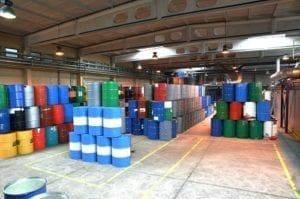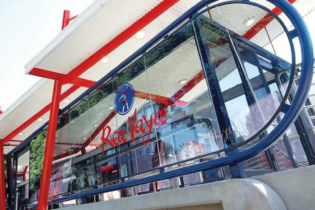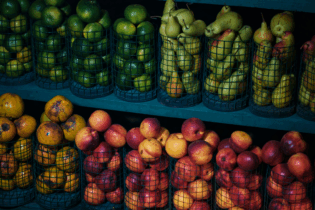As the world reels from the Tianjin, China, warehousing disaster, local companies are reminded to familiarise themselves with dangerous goods standards, suggests Tristan Wiggill.
South Africa has a dangerous goods storage standard – SANS 10263 Part 0 – which is the generic requirement. It lays out design features and procedures to be followed to minimise risk to the safety of persons, property, and the environment in cases where emergencies occur in warehouses used for the storage of dangerous goods. There are another three SANS standards for gas (Part 2), oxidisers (Part 5), and corrosives (Part 8) that cover the warehousing of dangerous goods, depending on the class of substance, not in excess of 1 000 kg. There is a compatibility table for road transport and one for warehouses – they are not the same. If you’re storing dangerous goods, you have to comply with this legislation, although there are one or two exceptions. Some of the provisions in the standard do not apply in certain cases; for example, in small-scale business enterprises, notwithstanding the provisions of Annex A, which refers to the quantities. The standard does not apply to areas where limited material is displayed and advertised on shelves for sale to the public – such as in retail sections of supermarkets, hardware stores, or home garden outlets – or to storage areas in laboratories. It also excludes the storage of pesticides, which forms part of SANS 10206. Separation anxiety The primary purpose of product segregation and separation is to minimise the risk to people, property, and the environment. The concept of segregation and separation is subject to widespread misinterpretation in the industry. Knowledge of SANS 10228 and 10234, and the use of safety data sheets, is vitally important. Ongoing liaison between the warehouse controller and the local fire authority is also essential. The standard says product separation shall be based on firefighting needs. For example, products requiring a dry firefighting medium shall, in general, be stored separately from products for which water or foam is required. Where the use of water is desirable for cooling items such as gas cylinders, and is unlikely to become contaminated, it is essential that such storage areas be separate from the areas in which the use of water would create additional hazards. Substances like calcium carbide produce flammable gas when exposed to water – one of the reasons the Chinese had the problems they did in Tianjin. There’s a lot of emphasis placed on the fire services in the area where the warehouse resides, to make sure that they are not only communicating with the warehouse controller, but that they are also taking part in the training of people, and are informing other services in the vicinity about goods that are being stored in their area of jurisdiction. A full set of up-to-date safety data sheets for all dangerous goods stored in a warehouse shall be available at least at one central location, which may be an administration office or security office. Key employees who are likely to become involved in the control of an emergency situation shall be aware of the location of, and have access to, the data sheets. An identical set of data sheets shall be lodged with the local fire authority as part of the emergency plan. The appropriate individual safety data sheet shall be posted at a prominent position in an area where each product is stored.In Tianjin, they had difficulty in identifying the substances and were using the excuse that it was a temporary storage facility. But, they could’ve had copies of safety data sheets on the packages themselves or at least visible in areas where the goods were stored.
Group effort The packing group and specific gravity (SG) of particular products are also very important to know. Often, people put products into containers and they suddenly find sulfuric acid in a container that is only certified to an SG of 1.4, despite the fact that sulfuric acid has an SG of 1.8. Packing group allocation is important because you can’t simply put any substance into any container – you must marry the packing group and the SG. Always check that UN certifications have been reapplied to reconditioned packaging. The idea of reconditioned packaging is to bring it back to the same level of integrity that it had when it was virgin packaging. SANS 10229 is very specific in terms of the type of information you should get on packaging. The shipping name, the UN number, the class diamond, and the name and address of the source of that product should be included. Those are four very important bits of information. A lot of imported packaging comes in with illegible writing that can’t be identified. This presents a problem for emergency services (ES) because items fall off vehicles and, when ES get to them, they can’t decipher what’s inside. Often, the ES teams will take these to disposal sites, only to find there was nothing to have been concerned about – an expensive and unnecessary exercise. Markings on the package – the UN number and shipping name – should at least be in English, which renders them suitable for inland distribution. The emergency response handbook is a source of very useful information. It’s important that warehouse and storage facilities have a copy of the handbook at hand and have a qualified person who knows how to access the information in it. SANS 10231, Clause 8.4 contains stipulations for the packing of freight containers with dangerous goods, particularly those that are going across borders and out to sea. It stipulates criteria for the compatibility of the goods placed into containers, the suitability of the packaging material, and the way it’s packed with dunnage, so that it doesn’t move around. If you pack a freight container as required in Clause 8.4, you must issue a container packing certificate, which stipulates that you have packed the container as required. As an industry, we need to consider what is required in South African warehouses to minimise the chances of a similar disaster taking place here. Industry hasn’t commenced with the Safety and Quality Assessment System (SQAS) for warehouses yet and, as such, much non-compliance is likely.







